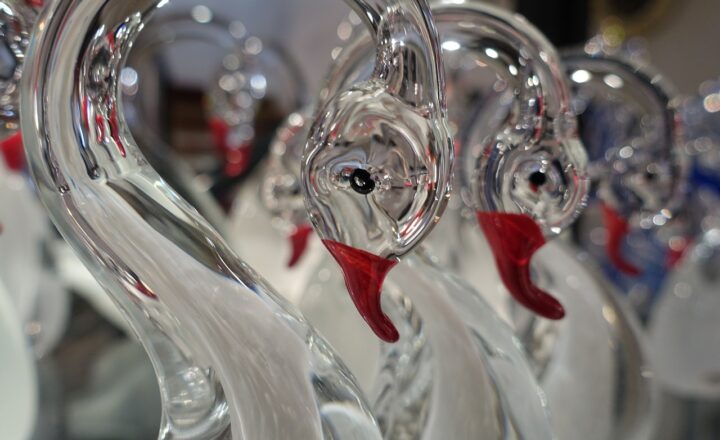The Renaissance of Glass Art: How Contemporary Artists Are Reviving an Ancient Craft
November 14, 2024

The art of glassmaking has evolved significantly over the centuries, but today we find ourselves in the midst of an exciting renaissance. Contemporary artists are not only embracing glass as a medium but are also pushing the boundaries of traditional techniques to create innovative and breathtaking works of art. This article explores how these modern artists are breathing new life into an ancient craft and what this means for the future of glass art.
1. A Brief History of Glass Art
The history of glassmaking dates back thousands of years, with its roots tracing to ancient Mesopotamia around 2000 BCE. Initially, glass was a luxury material reserved for the elite, used primarily for decorative vessels and small ornaments. The Romans popularized glass by making it more widely accessible, developing techniques like glassblowing.
In the Middle Ages, the craft flourished with the creation of stained glass windows in cathedrals, using vibrant colors to depict biblical stories. However, by the 18th century, glass techniques became industrialized, leading to a decline in personalized artistry.
Fast forward to the late 20th century, artists began to explore glass outside traditional boundaries, incorporating it into mixed media works, sculptures, and even installations. This resurgence set the stage for the contemporary glass art movement we witness today.
2. Contemporary Glass Artists: Innovators of a Timeless Craft
Contemporary glass art encompasses a diverse range of styles, techniques, and influences. Artists are experimenting with form, color, and application, leading to exciting developments in the field. Some notable contemporary glass artists include:
- Dale Chihuly: Perhaps the most famous glass artist, Chihuly’s large-scale installations and sculptures have transformed public spaces around the globe. His use of vibrant colors and organic shapes has redefined expectations of what glass can achieve in art and architecture.
- Kathy University: Focusing on the interplay of glass and light, Kathy’s work elegantly manipulates perception, causing viewers to see familiar objects in new ways. Her intricate designs challenge the viewer’s understanding of transparency and texture.
- David Patchen: Utilizing techniques across glassblowing, engraving, and assembling, Patchen’s work often incorporates unexpected materials. His whimsical and narrative pieces invite viewers into a fantastical world where glass creates meaning beyond its material value.
These artists and many others are contributing to the modern renaissance of glass art, proving that this medium has distinctive creative potential.
3. Techniques and Innovations in Glass Art
Contemporary glass artists utilize both ancient techniques and innovative practices to create their work. Some of these techniques include:
- Glassblowing: The oldest and most recognized technique involves blowing air into molten glass to shape it into various forms. Artists today have taken this method to new heights, exploring asymmetrical designs and large installations.
- Fuming: By introducing metallic compounds into the glass during its heating process, artists can achieve stunning effects. This technique allows the creation of iridescent surfaces that change color depending on the viewer’s angle and lighting, offering an endless challenge for creativity.
- Casting: Artists pour molten glass into molds to create intricate shapes. This method allows for precision and detail not achievable through blowing alone, enabling a fusion of sculpture and glass art.
- Slumping and Fusing: These methods involve heating flat glass at lower temperatures to reshape it or bond multiple pieces together. This allows for diverse textural and color explorations, elevating functional glass items into collectible art pieces.
These traditional techniques, infused with modern innovation, demonstrate how artists are evolving glassmaking beyond its historical confines.
4. The Role of Technology in Glass Art
In this digital age, technology plays a pivotal role in helping glass artists push boundaries. Techniques such as 3D printing and digital modeling are now being explored in the context of glass art creation. Artists can prototype sculptures or designs quickly before crafting their glass art, significantly reducing material waste and allowing for more experimental forms.
In addition, advances in glass processing tools enable artists to manipulate glass more intricately. Laser cutting, CNC machining, and engraving have allowed artists to pursue designs that involve detailed patterns and mixed media applications, ushering in a new era of creativity within glass art.
The confluence of technology and traditional glassblowing elevates the medium, proving that glass art can evolve with contemporary sensibilities while still honoring its rich history.
5. Environmental Consciousness in Glass Art
As the world becomes increasingly aware of environmental issues, contemporary glass artists are adopting sustainable practices. Many artists are focusing on using recycled glass in their work, which not only reduces waste but also introduces unique color and texture.
Furthermore, energy-efficient kilns and eco-friendly adhesives and materials contribute to their sustainable approach. Artists are beginning to incorporate natural themes into their work, exploring the beauty of nature and addressing environmental concerns through their art.
This environmental consciousness resonates with audiences today, allowing glass art to serve as both a medium of personal expression and a platform for social commentary.
6. The Future of Glass Art
The resurgence in glass art has sparked fresh enthusiasm among collectors, galleries, and enthusiasts. As more institutions begin to dedicate space and resources to glass art exhibitions, we can expect to see further innovation and exploration of this unique craft.
Furthermore, as educational institutions expand their glass programs, a new generation of artists will emerge with diverse backgrounds and fresh perspectives, ensuring that the future of glass art is bright and continually evolving.
Beyond aesthetics, contemporary glass art has the power to merge science, technology, and philosophy, contributing to interdisciplinary dialogue in art and social issues. Today, it serves as an indicator of our cultural zeitgeist, and its evolution could mirror our society’s aspirations and values.
Conclusion
The renaissance of glass art represents a reawakening of an ancient craft that aligns with the spirit of innovation and creativity seen in the contemporary art scene. Modern artists are carving out a space for glass as a vibrant and transformative medium, bridging past techniques with the potential of new technologies.
As we move forward, the appreciation for glass art will continue to expand, inspiring individuals and communities through its beauty and complexity. Whether through immersive installations or intricate sculptures, the revival of glass artistry invites us to reflect on not just the craft itself but also our relationship with materials, creativity, and the world around us.
If you wish to explore glass art further, consider visiting local galleries or taking part in workshops to experience its magic firsthand. The journey through glass art promises to be captivating, enriching, and visionary as we look toward tomorrow.






